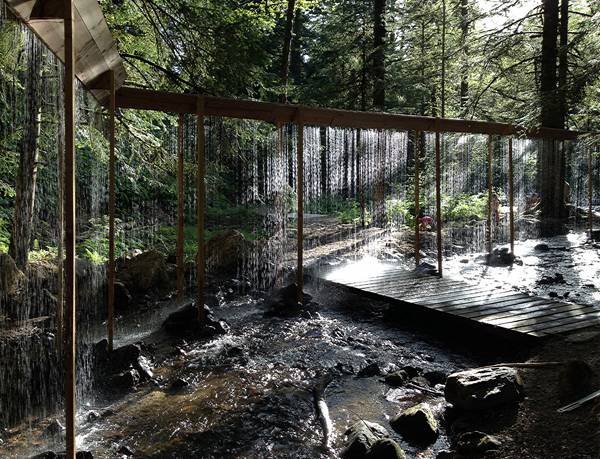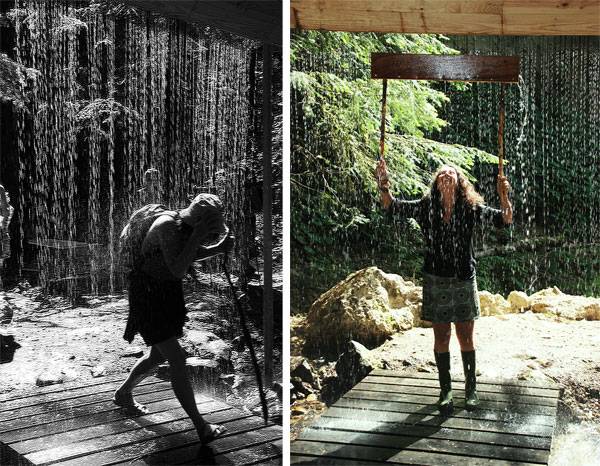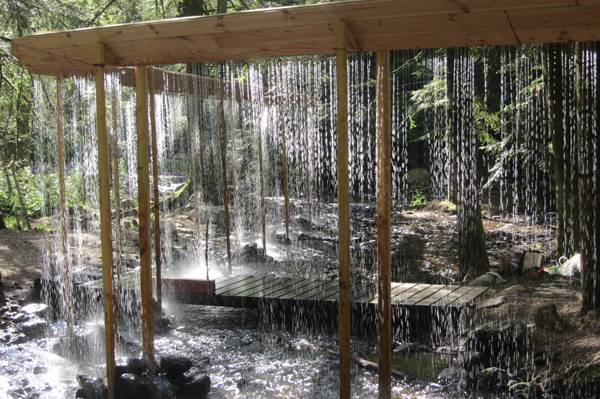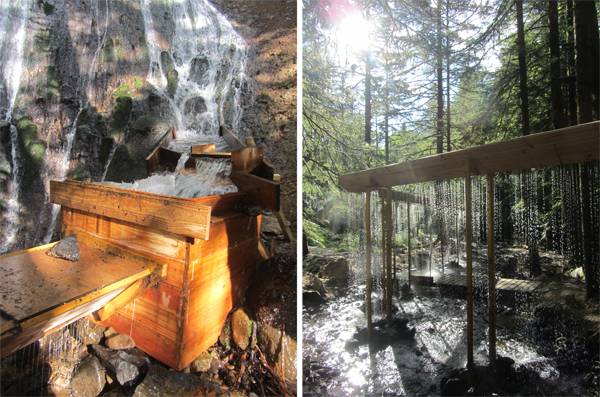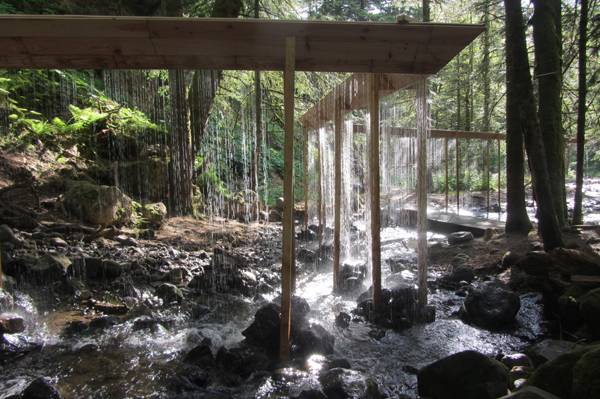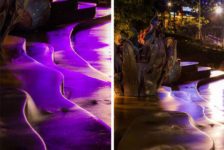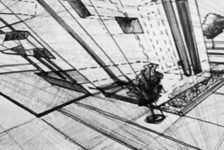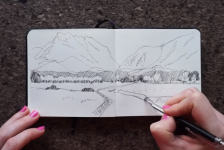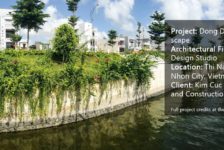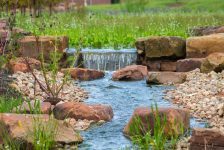Bridal Veil designed by architects Louis Sicard and Emil Yusta. Have you ever felt like you were in limbo between one world and another? A walk through the Bridal Veil, built around and through the Rossignolet Waterfall in central France, might make you feel that way. The installation, designed by architects Louis Sicard and Emil Yusta, is simple, elegant, and revolutionary, regulating the flow of the waterfall so that water drips in a cascade from innumerable loci, creating illusion and mystery within the natural setting. This splendid design welcomes visitors into nature’s realm, encouraging them to become one with the water falling from above. Sicard has created a pattern that is both elegant and efficient, eco friendly and conservative. It’s time for you to pass your face through the Bridal Veil.
The Location The waterfall is located in the Massif du Sancy, a mountainous region in central France that lies at the heart of the Nature Park of the Auvergne Volcanoes. The park boasts of having the tallest volcano in France — the Puy de Sancy, with a summit of 1,886 meters. The Massif du Sancy is known for its breathtaking landscapes and unspoiled heritage. The volcanoes provide visitors with a wonderful view as they walk across the sleeping green giants, which have lain dormant for 8,000 years. Auvergne covers 26,013 square kilometers, equivalent to 4.8 percent of France’s total surface area. The Veil The project was prepared in a carpenter’s workshop in Spain, then installed onsite over a period of 10 days. The piece was installed for the Horizons, Sancy art and nature festival and can be visited until September 2014. WATCH: Horizons Sancy 2014 The Bridal Veil stretches 40 meters through the trees. Sicard worked with fellow architect Yusta and carpenter Thorsten Fischer to design and build a pine and copia timber structure that carries a channel similar to an aqueduct, zigzagging through the woods and beneath the waterfall. “The waterfall is called the Bridal Veil for its delicate appearance (and) its uniform distribution on a deposit of volcanic ash. When the sun is up, lights and shadows of the forest and reflections of the water finally complete the magical scene of the waterfall,” Sicard said. A Moment to Enjoy But the design isn’t something to just look at and admire. Sicard also created it so that visitors might interact with nature. That interaction allows people to enjoy the moment, making it remarkable and unforgettable. The way the design reacts with nature and its characteristics plays a vital role with the presence of light, shadows, and sounds, making the visitors’ experience interesting and joyful. “From the first sketches of the projects, the idea was to use the water and its characteristics as the main component of the installation. The fresh sound of the source plays with the multiple reflections and transparency of the water. The second idea is to underline the beauty of the context, to create something that would match with the lights and shadows and the large wooden trunks of the forest,” Sicard said. Related Articles:- How Can You Make a Stunning Waterfall Even More Stunning?
- Surroundings: Episode 1 – Using Land Art to Create a Place
- Mark Nixon’s Chimecco Chime Bridge
The slender timber posts supporting the aqueduct create long shadows that mimic those cast by the tall trees, making the design a replica — a bio-mimicry — of the pine forest around the Bridal Veil. The architect has made a higgledy-piggledy arrangement of the planks, making sure that the water doesn’t spill out uncontrollably.
The Bridal Veil doesn’t just act as a play of art through light, but also through sound, with the water dripping in such a way that it produces a music that is awesome to hear and gives visitors the sense of being inside a natural shower. WATCH: The Soothing Sounds of the Bridal Veil While the installation is meant to mimic nature, it also is designed to conserve water. A reservoir collects water directly from the waterfall and an overfill containment system regulates the flow. A filter prevents particles from entering the water, keeping it clean and clear. The water then flows into the timber channel, through 4,000 holes arranged one every centimeter. Louis Sicard has developed a unique design that interacts with visitors so well that it provides the joy of taking a short, sweet shower of natural water directly from the Rossignolet waterfall. This masterpiece has really raised the bar for waterfall design. The Bridal Veil provides visitors with eye-catching view of the forests and the waterfall, creating water so neat and clean that people can’t wait to wet their heads in the innumerable drops from the veil. Recommended Reading:- Land Art by Ben Tufnell
- Land and Environmental Art by Jeffrey Kastner
Article written by Sha Sulaiman Return to Homepage
Published in Blog


